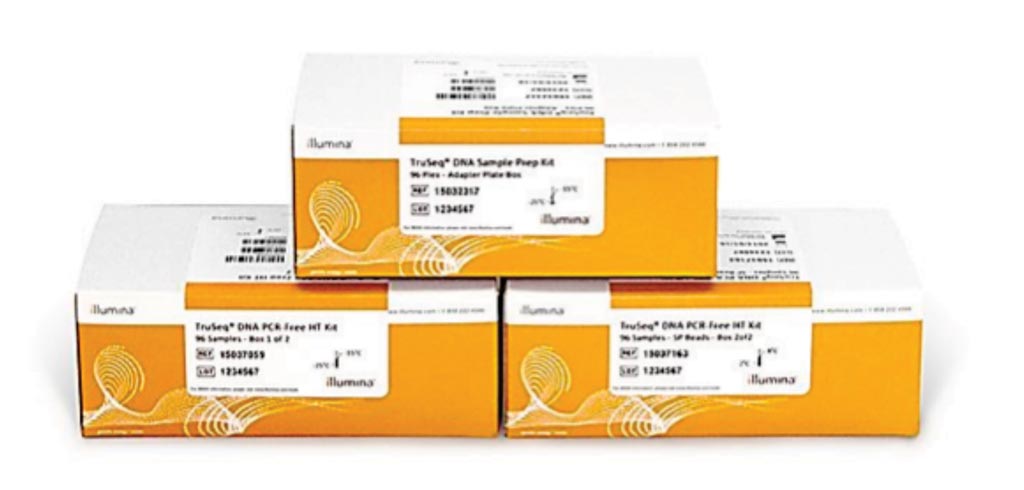Trial Finds High Analytical Performance in Whole-Genome Sequencing
By LabMedica International staff writers
Posted on 26 Oct 2019
Genetic diseases are a leading cause of infant mortality particularly among infants admitted to neonatal, pediatric, and cardiovascular intensive care units (ICUs). Disease progression can be extremely rapid in infants, necessitating early etiologic diagnosis in order to inform interventions that can lessen suffering, morbidity, and mortality.Posted on 26 Oct 2019
Timely diagnosis requires genome-scale testing since more than 14,000 simple genetic diseases have been described and their presentations often overlap in seriously ill infants. Examples include seizures, respiratory and cardiac failure, hypotonia, hypoglycemia, and jaundice. Whole-genome sequencing can be a viable first-line diagnostic testing option, according to a recent trial.

Image: TruSeq DNA PCR-Free Kits: all-inclusive whole-genome sequencing (WGS) library preparation that provides accurate and comprehensive coverage of complex genomes (Photo courtesy of Illumina).
Scientists at the Rady Children's Institute for Genomic Medicine (San Diego, CA, USA) sought to enroll a greater range of infants, as compared to previous efforts. In the past, clinical sequencing studies focused on infants in intensive care units with unknown, but suspected genetic diseases. Here, the team used broader inclusion criteria, but did, for instance, exclude infants for whom it was thought unlikely that a genetic diagnosis would change their clinical management or who had sepsis but were responding to therapy normally. In all, 213 infants were enrolled in the study.
Eleven percent of these infants were too ill to undergo randomization and instead received ultra-rapid whole-genome sequencing, as that approach would provide the fastest possible route to diagnosis. Of the remaining 189 infants, 95 were randomized to receive whole-exome sequencing and 94 to whole-genome sequencing. They underwent sequencing within 96 hours of their admission to the neonatal ICU (NICU).
Trio EDTA-blood samples were obtained where possible and all samples were sequenced upon receipt. Genomic DNA was isolated with an EZ1 Advanced XL robot and the EZ1 DSP DNA Blood kit. DNA quality was assessed with an assay kit using the Gemini EM Microplate Reader. Genomic DNA was fragmented by sonication, and bar-coded, paired-end, PCR-free libraries were prepared for rWGS with TruSeq DNA LT kits or Hyper kits.
Both whole-genome and whole-exome sequencing had similar diagnostic rates, 19% and 20%, respectively. The time to diagnosis was also similar for the two groups, about 12 days. However, the scientists contended that the difference in the proportion of diseases diagnosed by whole-exome and whole-genome sequencing will likely change as experts' ability to interpret the pathogenicity of noncoding and structural variation improves. As it stands now, interpretation is largely confined to coding variation. Ultra-rapid whole-genome sequencing (urWGS) meanwhile, had a diagnostic rate of 46% and a median time to diagnosis of 2.3 days, which indicated to the investigators that it could be valuable as a first-tier test.
The authors concluded that rapid genomic sequencing can be performed as a first-tier diagnostic test in infants with diseases of unknown etiology at time of admission to regional ICUs. In unstable infants and those in whom a genetic diagnosis was likely to impact immediate management, urWGS had optimal analytic and diagnostic performance, by virtue of shortest time to result. The study was published on October 3, 2019, in the American Journal of Human Genetics.
Related Links:
Rady Children's Institute for Genomic Medicine













